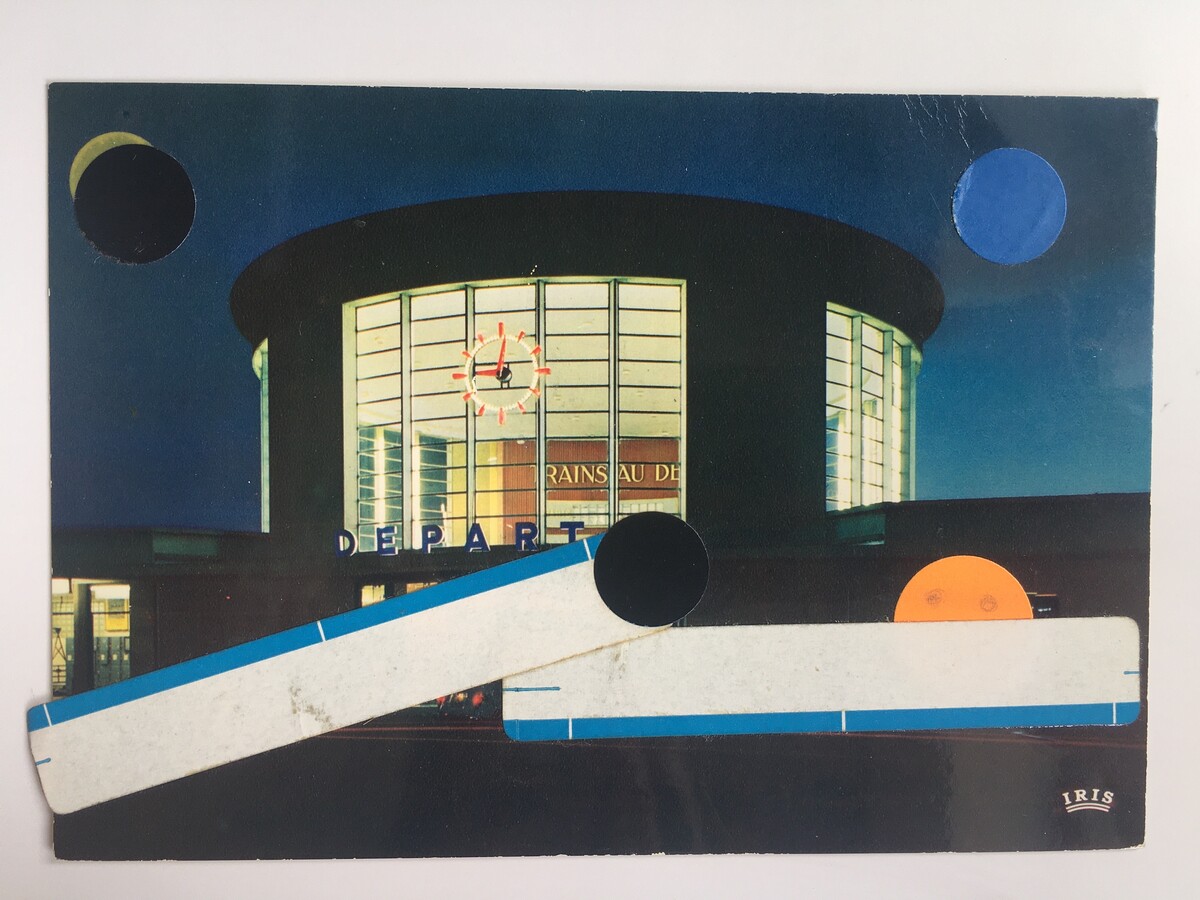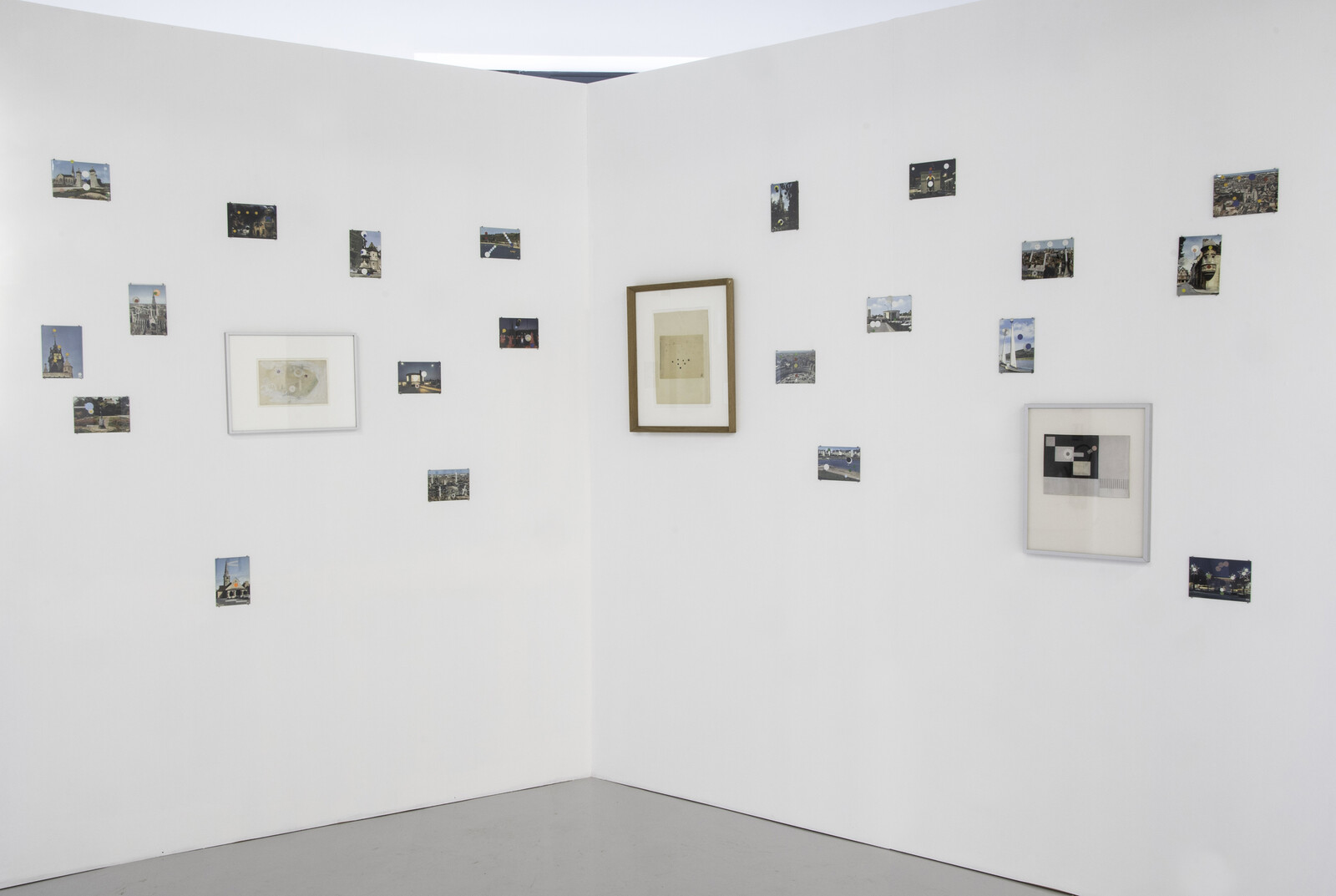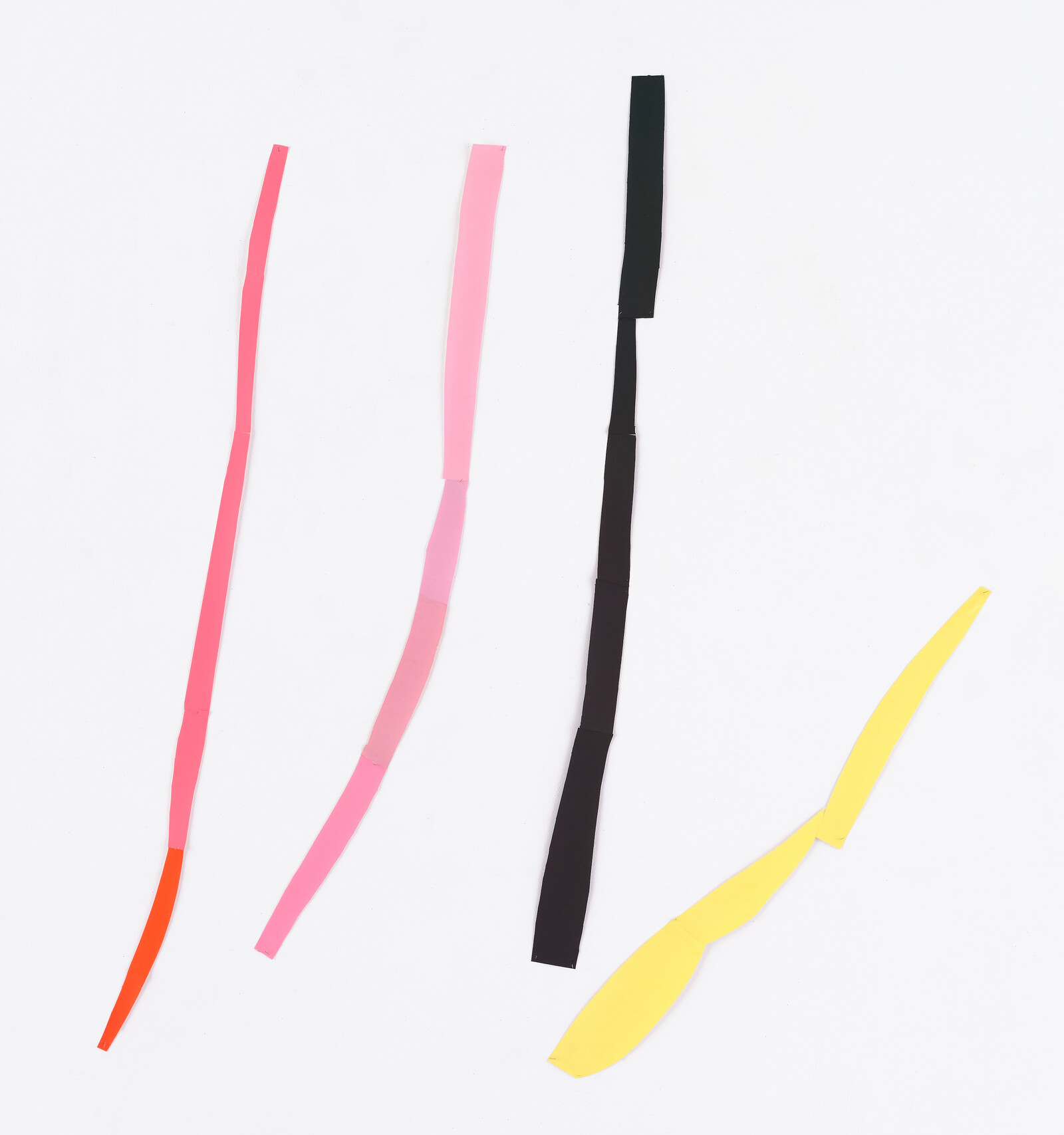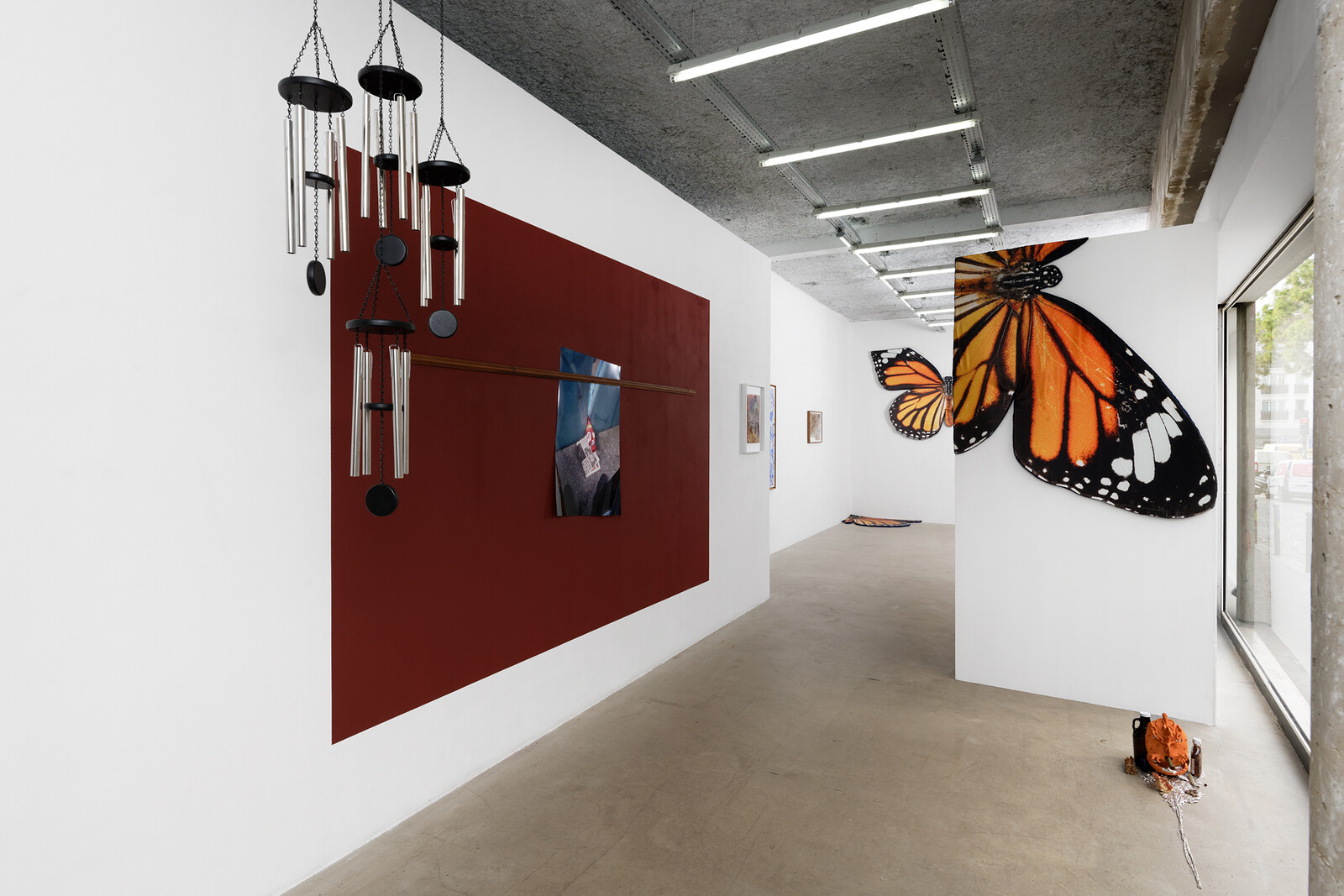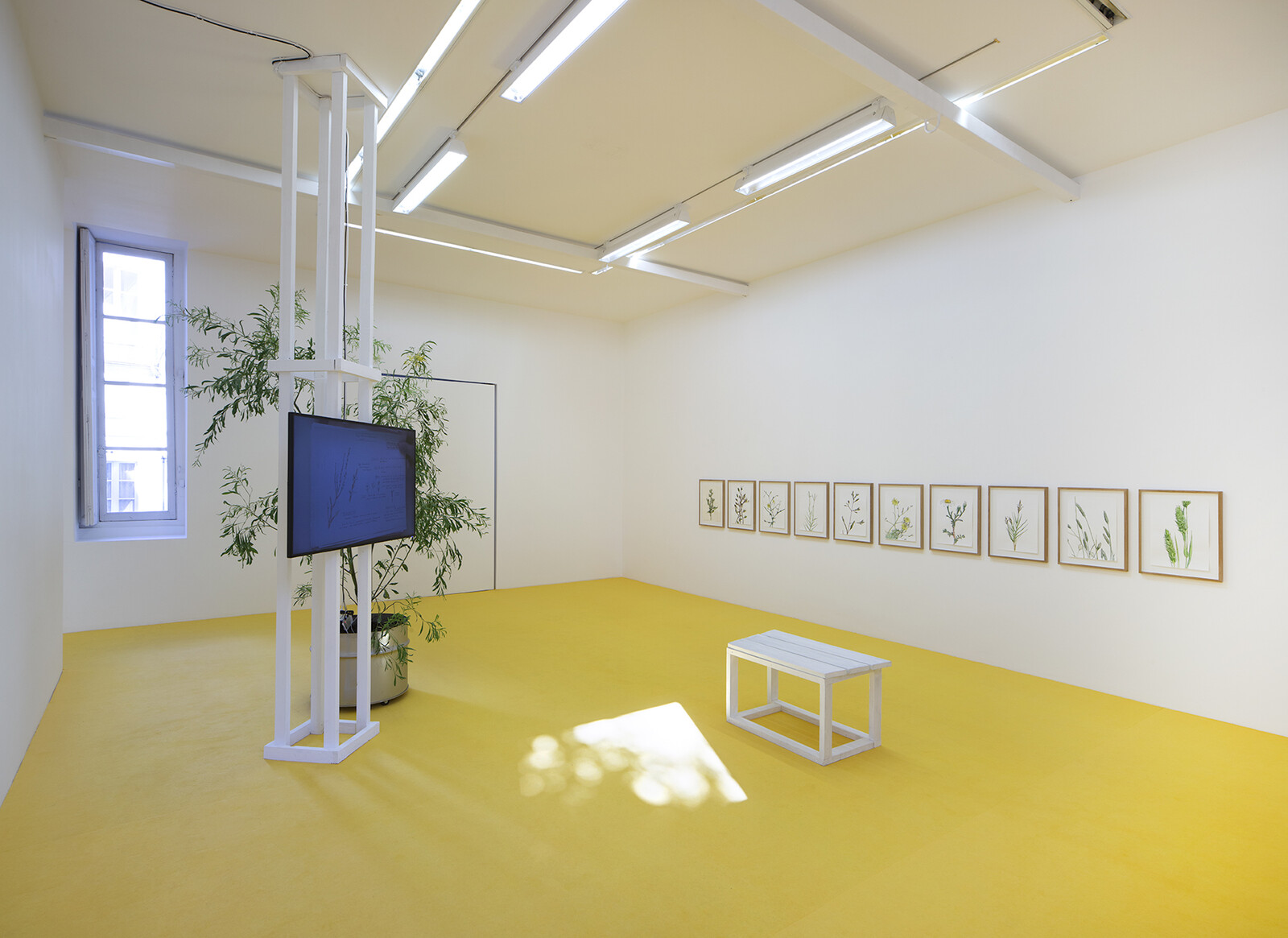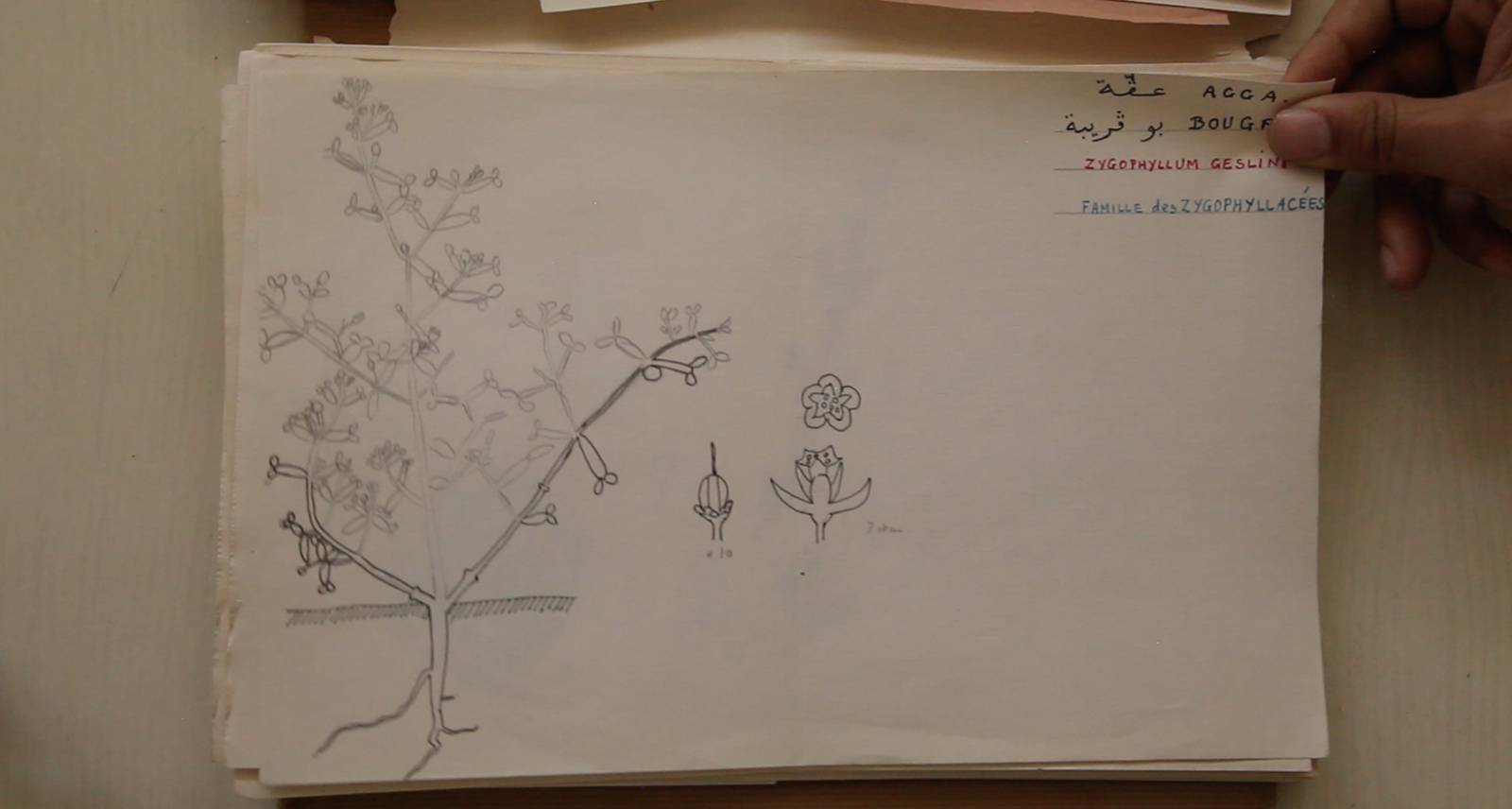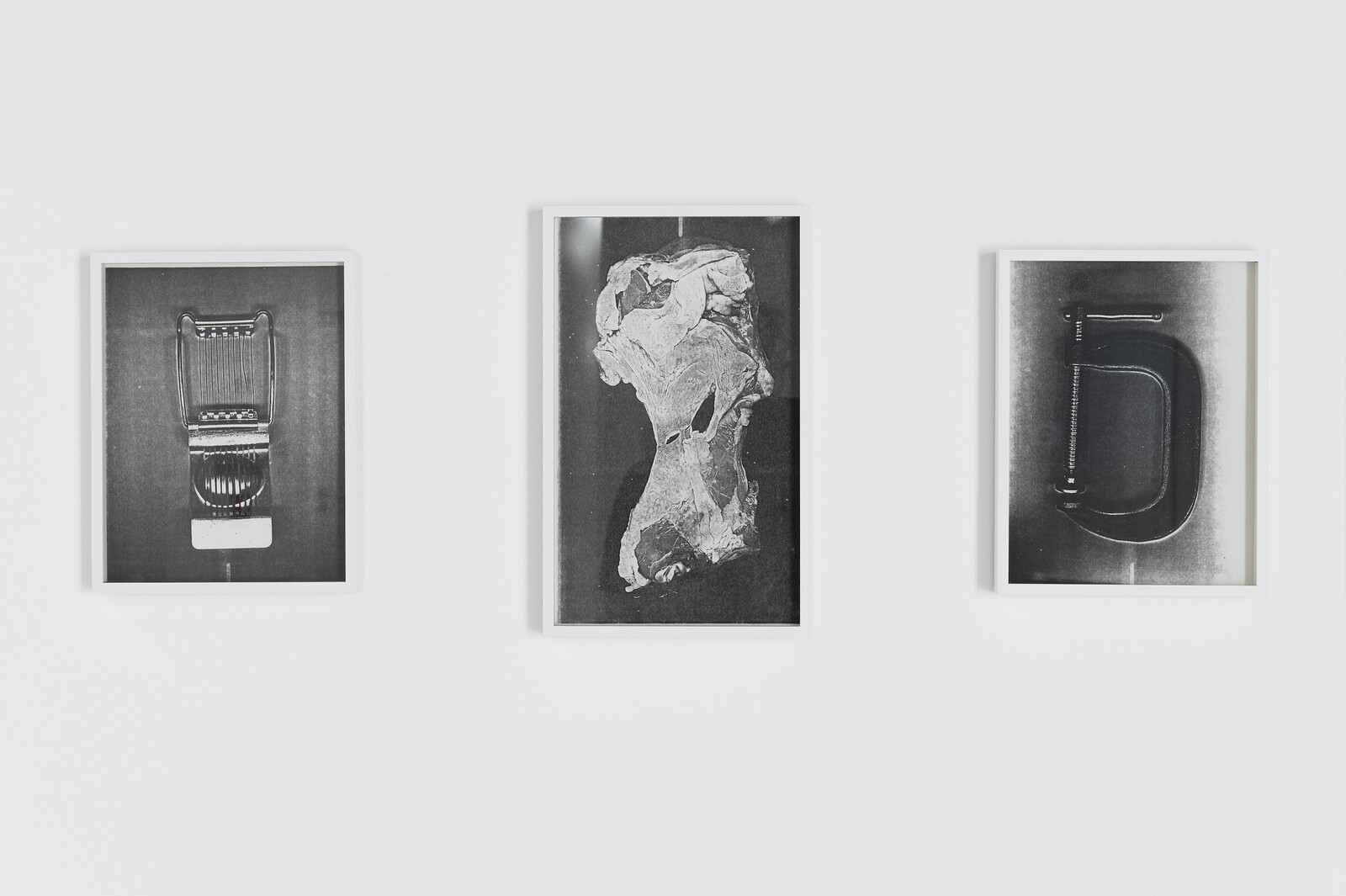Working in near-isolation in her Parisian bedroom-studio from the early 1970s until her death in 1981, the Alsatian artist Marcelle Cahn took an archive of old tourist postcards—the Eiffel Tower, a train station, a cathedral, a sleek white marble polar bear—and dappled them with shapes of varying sizes and colors. Displayed in the two-part group exhibition “Le plan libre – 1st chapter” at Jocelyn Wolff (the second part opens in early November), this modest intervention by an artist better known for her abstract paintings and collages feels anything but nostalgic: in isolation, one makes do with what one has.
In contrast to those galleries presenting artworks that either respond to the pandemic directly or were made during lockdown, oblique but timely approaches such as this stand out. Seeking to invert the limitations of confinement, this exhibition takes as its premise the titular architectural concept of doing away with interior walls to create one large open space—a conceit which plays out in the show’s uncluttered layout. Like Cahn’s delicate compositions, Georges Koskas’s dotted and lined geometric abstractions from the 1950s evoke the utopian, modernist aspiration to devise a universal pictorial language. Guy Mees’s sly, colored, cutout paper scraps from his “Lost Space” series from the 1980s and ’90s, pinned to the wall as if to underscore its arbitrariness, are echoed in Ismaïl Bahri’s Mesure (2019–20), hanging colored tape placed in the gallery’s stairwell to mark the passage between connecting levels.
At Air de Paris, which like Jocelyn Wolff is located in the new Komunuma complex in the eastern suburb of Romainville, Pati Hill’s signature Xerox prints index an archive of common, household items: the sole of a shoe, a slab of meat, hair curlers, a sardine can. Compressed onto the surface of the scanning bed, each object appears variously distorted, distended, unrecognizable, or crisply legible, uncannily transposed through the process of copying. A record of routinized domestic life and its ephemera, Hill applies a sharp critical eye to banal objects: an egg-slicer, a mousetrap, and razor blades evoke a latent struggle on the verge of irrupting, while withered flowers and a butterfly preserved in shattered glass depict the acute, even sublime suffering of denatured beings. When Hill appears in a Xerox, as a blurry hand, or in the evocative Untitled (arm and shoulder) (c. 1980), there is a rupture: “Must we always live in our boxes like hamsters?” she asked in her 1976 book, Impossible Dreams. Hill’s works are acts of quiet resistance against the invisibility of women’s work, the physical and mental isolation of the mother and housewife, and the difficulties of maintaining an artistic practice—even one as resourceful as hers—under such gendered conditions.
At Belleville’s Galerie Sultana “Yesn’t,” a group exhibition curated by artist and performer Paul Maheke, considers strategies of negation and refusal. Maheke’s essay “The Year I Stopped Making Art,” published in Documentations this May, set the tone for this show: a critique of continued demands for production under the increasing precarization of artistic labor and life—something that far predates the advent of Covid-19. The show’s title suggests a desire to abolish binaries: between yes and no, gender and sexuality, debt and value, life and death. How these ideas figure in the gallery is, predictably, opaque.
Patrick Staff’s holographic video-poem Eat Clean Ass Only (Hologram) (2020), for example, eloquently insists on the fallibility of pronouns “unable to hold a person together.” Candice Lin’s mixed-media collage and drawing Divination Board (2019)—an idiosyncratic take on the Yoruba object through which one seeks knowledge and guidance from spirits—features mythical figures, fetishes, and diagrams, summoning alternative mythologies from a variety of cultures. One of many peripheral inscriptions asks if such speculative practices need “always [be] about a fantasy of choices within a biopolitical, bourgeois ideal?” Maheke’s contributions—two pieces titled They live in the shade of a story that has been told for them by some people they didn’t know (2020)—are aberrant portraits, figures stained in iron chloride on copper supports, from which languid eyes look out gravely. Splayed on the floor and along the edges of the gallery’s walls, Anthea Hamilton’s Chopped Monarchs (2018)—largescale, fragmented, sculptural butterfly prints on silk—is doubly violent: the severed migratory insect, in her grotesque parody of taxidermy, can no longer fly. Taken individually, these works are engrossing. Considered as a whole, however, they sketch out an intentionally fugitive—though ultimately uneven—exhibition. (A second instalment, also slated to open in November, may add critical force to the show.)
Mohamed Bourouissa’s “Brutal Family Roots” at kamel mennour, near Saint-Michel, reflects this interest in non-binarism in relation to migration and the global movement of plants. First presented at the 2020 Biennale of Sydney, the eponymous installation features a carpet whose bright yellow matches the color of the Acacia flower, a tree common both to his birth country of Algeria and to Australia, specimens of which are planted around the space in stainless steel drums.
The work is a continuation of Bourouissa’s ongoing project based on his research into Bourlem Mohamed, a patient of Frantz Fanon at the psychiatric hospital of Blida-Joinville in Algeria, who took up gardening as a therapeutic practice. In his video Herbarium incomplet (2020), displayed on a flat-screen monitor, the artist presents an unfinished and anonymous herbarium of regional Algerian plants. As he turns the pages of the book, he places his own illustrations of the corresponding species—delicate pencil and watercolor drawings which are hung at varying heights throughout the space. Though incomplete, the classificatory precision of the herbarium evinces a history of migratory routes, colonial expeditions, and displacements, within which terms like native, foreign, or invasive—applied to plants and people alike—are hard-pressed to hold meaning.
An untitled rhythmic audio track features voiceovers by musicians MC Kronic and Nardean that insist on a poetics and politics of the translocal. It describes rooting and uprooting, translation and its impossibilities, the relation to soil, land, the past, and colonial trauma. “I’ve met many strangers who have labeled me / But my roots still have their own memories, / I still have my kin.” The resilience and tenacity of plant life offers a salient symbol of, and encouragement for, our times. Another voice intones: “I am an infinite experiment.”
